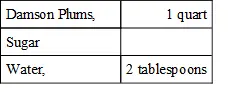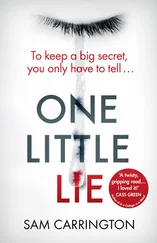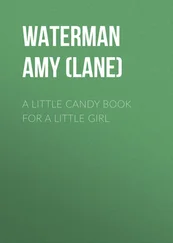Amy Waterman - A Little Preserving Book for a Little Girl
Здесь есть возможность читать онлайн «Amy Waterman - A Little Preserving Book for a Little Girl» — ознакомительный отрывок электронной книги совершенно бесплатно, а после прочтения отрывка купить полную версию. В некоторых случаях можно слушать аудио, скачать через торрент в формате fb2 и присутствует краткое содержание. Жанр: foreign_prose, foreign_antique, на английском языке. Описание произведения, (предисловие) а так же отзывы посетителей доступны на портале библиотеки ЛибКат.
- Название:A Little Preserving Book for a Little Girl
- Автор:
- Жанр:
- Год:неизвестен
- ISBN:нет данных
- Рейтинг книги:4 / 5. Голосов: 1
-
Избранное:Добавить в избранное
- Отзывы:
-
Ваша оценка:
- 80
- 1
- 2
- 3
- 4
- 5
A Little Preserving Book for a Little Girl: краткое содержание, описание и аннотация
Предлагаем к чтению аннотацию, описание, краткое содержание или предисловие (зависит от того, что написал сам автор книги «A Little Preserving Book for a Little Girl»). Если вы не нашли необходимую информацию о книге — напишите в комментариях, мы постараемся отыскать её.
A Little Preserving Book for a Little Girl — читать онлайн ознакомительный отрывок
Ниже представлен текст книги, разбитый по страницам. Система сохранения места последней прочитанной страницы, позволяет с удобством читать онлайн бесплатно книгу «A Little Preserving Book for a Little Girl», без необходимости каждый раз заново искать на чём Вы остановились. Поставьте закладку, и сможете в любой момент перейти на страницу, на которой закончили чтение.
Интервал:
Закладка:
After draining the currants sufficiently, she weighed them and put them into the saucepan. To each pound of fruit Adelaide added one pound of sugar. With the wooden masher she mashed the currants and stirred them well with the sugar.
Putting the saucepan on the stove, she let the fruit come slowly to the boiling point, stirring with the wooden spoon frequently to prevent it from burning. It boiled gently for forty-five minutes, then Adelaide poured it into sterilized tumblers at once and stood them away to cool. When they were cold she wiped the top and outside of each tumbler, poured melted paraffin over the jam, shaking it gently from side to side to keep out any air, pasted on the labels and stored away in the preserve closet.
Black Currant Jam

Adelaide found that when she used red currants, the picking off of the stems consumed a lot of time, so she was glad to find the black currants come already stemmed.
Putting the black currants in the colander, she proceeded to wash them thoroughly by dipping the colander up and down in a pan of clear cold water several times. If they were very dusty she changed the water two or three times until it was clear. After weighing the currants she poured them into a saucepan, mashed them with the wooden masher, added an equal weight of sugar, mixed well with the wooden spoon, let stand until the juice ran, then put the saucepan on the stove and let the mixture come slowly to the boiling point, stirring occasionally. While this was boiling gently for forty-five minutes, Adelaide sterilized the tumblers, not forgetting, however, to stir the jam frequently.
When it was cooked she poured the jam at once into the tumblers and let it cool; as soon as it was cold, Adelaide wiped each tumbler thoroughly, inside the top and on the outside, poured melted paraffin over the jam, which she shook gently from side to side to keep out all air, then pasted on the labels and stored away in the preserve closet.
Blackberry Jam

Mother explained to Adelaide that the flavor of the blackberry was delicious, but you did not enjoy it so much if the seeds were allowed to remain, so that jam was prepared a little differently.
After picking the blackberries over carefully, Adelaide put them in the colander, then dipped it up and down in a pan of cold water and set aside to drain. Afterwards, she put the fruit in the saucepan and with the wooden masher mashed it well. Then she stood the saucepan over the fire and let the fruit come gradually to the boiling point. While she let the fruit boil gently for twenty minutes, Adelaide stirred frequently, using the long wooden spoon.
Moving the saucepan from the fire, Adelaide then rubbed the fruit through a fine sieve (mother said if the sieve let the seeds pass through to use a cheesecloth bag) and measured. To each cup of juice, which she returned to the saucepan, she added three-fourths of a cup of sugar, and putting the jam back over the fire, let it heat slowly, stirring often. This took three-quarters of an hour of gentle boiling before it was done.
Adelaide poured at once into the sterilized tumblers, which were waiting to be filled, and set aside to cool. When cold, she wiped the tops and outsides carefully with a damp cloth, poured melted paraffin over the jam, shaking it gently from side to side, thus keeping out all air, pasted on the labels, and stored the jars away in the preserve closet.
Gooseberry Jam

"The jams with a nice tart flavor," Adelaide said, "are the ones Daddy likes best." He was especially fond of gooseberry jam and for that reason Adelaide decided to surprise him.
The gooseberries Adelaide put in the colander and dipped up and down in a pan of clear cold water until thoroughly clean, then she drained them. With the strawberry huller she pulled off the tops, though she could have used the little sharp knife; next she weighed the gooseberries and put them in the saucepan to be mashed with the wooden masher.
To each pound of fruit she added a pound of sugar, placed the saucepan over the fire and let the fruit come slowly to the boiling point. This needed to be stirred with the wooden spoon occasionally, but after it had reached the boiling point Adelaide stirred it very frequently to prevent burning. It took three-quarters of an hour to cook, and then Adelaide filled the sterilized tumblers with the jam and set it aside to cool. When the jam was cold she wiped each tumbler around the top and on the outside with a clean damp cloth, poured melted paraffin over the jam, pasted on the labels and stored away in the preserve closet.
Of course Daddy was very much pleased with this jam.
Large Blue Plum Jam

The large blue plums, Adelaide's mother said, made delicious jam. Adelaide washed and wiped each plum carefully, then slit each one with a silver knife and took out the stone. After weighing them and putting the plums in the saucepan she added three-fourths of a pound of sugar to each pound of fruit, letting them stand until the juice ran. Placing the saucepan over the fire, she stirred the fruit occasionally until it reached the boiling point, after which she let it boil slowly, for forty-five minutes, and continued to stir very frequently to prevent the jam from burning or sticking to the bottom. In the meantime, Adelaide had the tumblers sterilized and waiting, and as soon as the jam had finished cooking she poured it at once into the tumblers. When the jam was cold she wiped the top and outside of each tumbler with a clean damp cloth and poured melted paraffin over the jam, shaking it gently from side to side to exclude all air. Next came the labels, and then the tumblers of jam were stored away in the preserve closet.
Green-Gage Plum Jam

The green-gage plums, Adelaide found, came later in the season, but they were worth waiting for. These she cut open with a silver knife, after having washed and wiped them carefully, and removed the stones. Weighing the plums, she put them in the saucepan, and to each pound of fruit she added three-quarters of a pound of sugar. When the juice began to run she placed the saucepan over the fire, and let the jam come slowly to the boiling point, stirring it every little while; continuing to cook the jam for forty-five minutes, Adelaide stirred frequently to prevent its sticking to the bottom and becoming burned. As soon as the jam had cooked sufficiently she poured it into the sterilized tumblers which were ready, and when the jam was cold, Adelaide wiped the tops and outsides of the tumblers with a clean damp cloth, poured melted paraffin over the top, and shook gently from side to side to exclude all air. The labels were next pasted on, and the jam was then stored away in the preserve closet.
Damson Plum Jam

Compared to the large blue plums and the green-gage plums Adelaide found the damson plums quite small, and mother told her they would have to be cooked first before she could remove the stones easily. So Adelaide washed the Damson plums carefully, and with a silver knife slit each one before putting them into the saucepan. This was to let the juice run. But, first, Adelaide measured two tablespoons of cold water into the saucepan, then poured in the plums. Of course she had weighed the plums as usual, and also an equal amount of sugar, but the sugar she placed in a bowl and placed on one side until ready to use. The saucepan was then placed over the fire and the plums were cooked slowly until tender, when they were removed, and with two silver forks Adelaide easily picked out the stones. Adding the sugar, she returned the saucepan to the fire, and while it was coming to the boiling point she stirred constantly with a wooden spoon, so that the sugar would not stick to the bottom and burn. Still continuing to stir, she let the jam cook slowly for forty-five minutes.
Читать дальшеИнтервал:
Закладка:
Похожие книги на «A Little Preserving Book for a Little Girl»
Представляем Вашему вниманию похожие книги на «A Little Preserving Book for a Little Girl» списком для выбора. Мы отобрали схожую по названию и смыслу литературу в надежде предоставить читателям больше вариантов отыскать новые, интересные, ещё непрочитанные произведения.
Обсуждение, отзывы о книге «A Little Preserving Book for a Little Girl» и просто собственные мнения читателей. Оставьте ваши комментарии, напишите, что Вы думаете о произведении, его смысле или главных героях. Укажите что конкретно понравилось, а что нет, и почему Вы так считаете.












